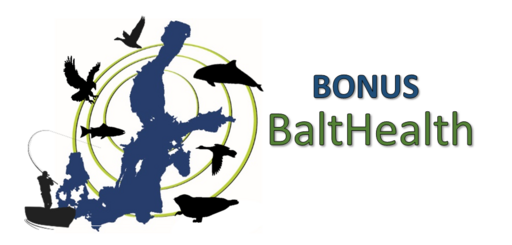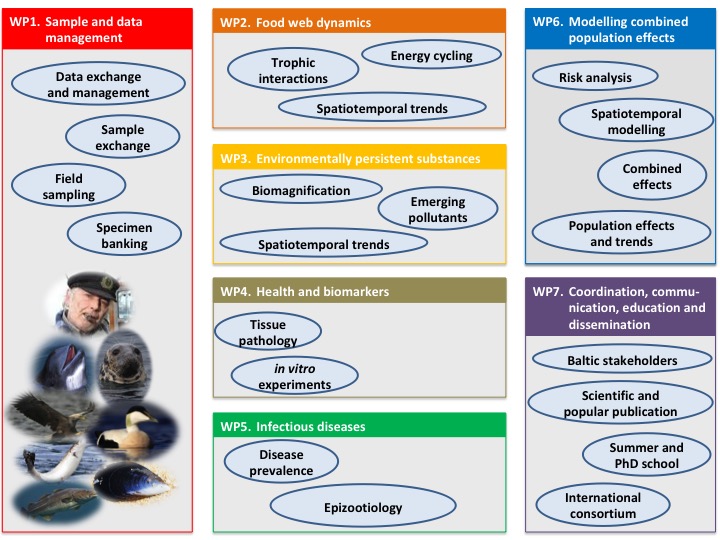
The overall objective of BALTHEALTH is to obtain detailed information on the food web dynamics of energy, anthropogenic hazardous substances (AHSs) and diseases, using key ecological and commercial Baltic species. This information combined with comprehensive health assessments based on existing and newly developed biomarkers and in vitro experiments will be used to extrapolate the effect of multiple stressors on multiple levels of the ecosystem.
In order to accomplish these goals, BALTHEALTH is organised around seven interlinking work packages (WPs):

WP1 (sample and data management) will identify the strengths and knowledge gaps of available samples and data to direct efforts in other WPs.
WP2 (food web dynamics) will improve our understanding of spatiotemporal food web dynamics and biogeochemical cycling in the Baltic and Kattegat areas using state-of-the-art dietary tracers and modelling approaches.
WP3 (anthropogenic hazardous substances) will quantify important legacy substances and identify those of emerging concern for Baltic wildlife as well as model the food web dynamics of AHSs.
WP4 (health and biomarkers) will evaluate, develop and test predictive biomarkers of individual and population health, including innovative in vitro and genomic techniques.
WP5 (infectious diseases) will survey key species in the Baltic food web for infectious and zoonotic diseases and will investigate the epizootiology of pathogens and their interaction with other stressors.
WP6 (modelling combined population effects) will develop innovative mechanistic models to evaluate the effects of multiple stressors on key Baltic species using data generated from previous WPs.
WP7 (coordination, communication, education and dissemination) will conduct the management of the project and assures student training and dissemination of project results.